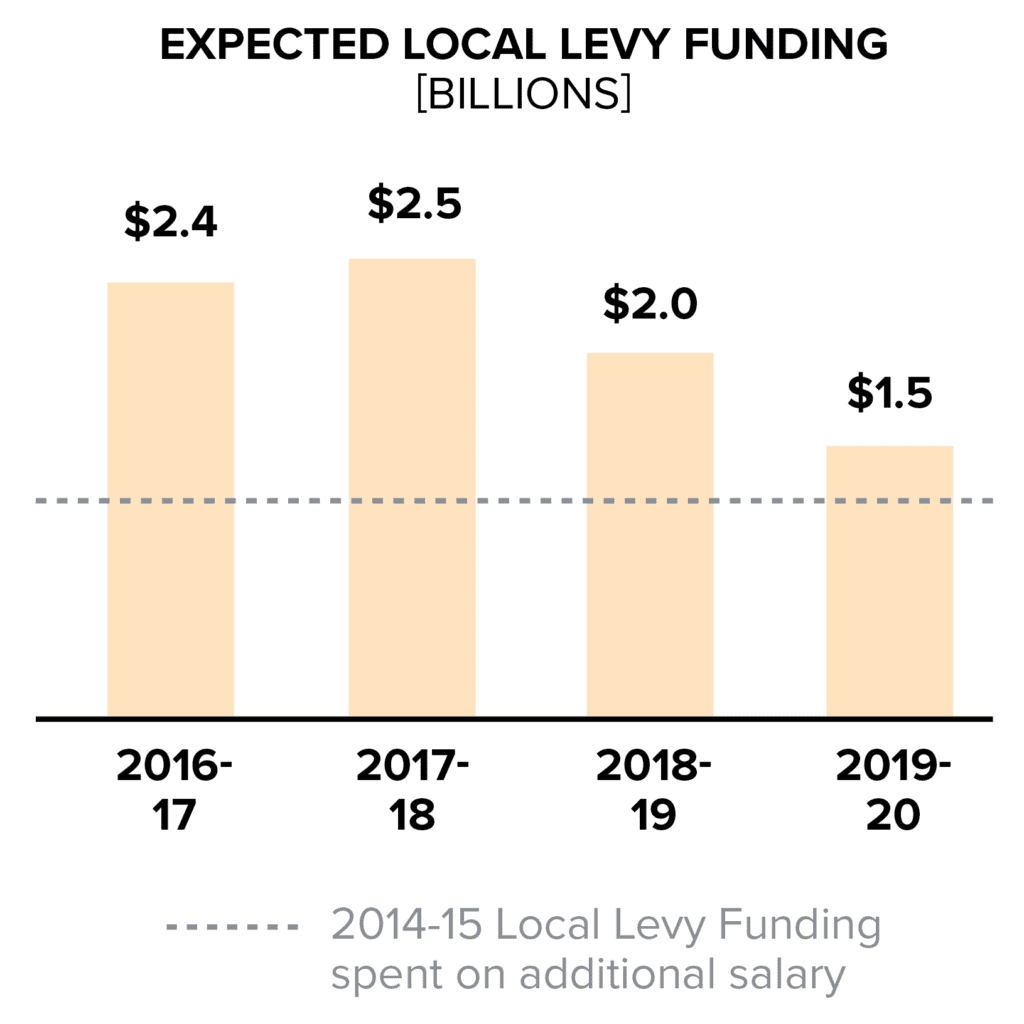 By Jacob Vela, Senior Policy Analyst
By Jacob Vela, Senior Policy Analyst
As districts across the state start planning for next school year they will be faced with some unfamiliar choices as they look to allocate $2.5 billion more in state funding next school year than the current school year. The most recent increase in state education funding was directed mostly to increase K-12 staff salaries, including the more than 50,000 teachers across the state. This was a key part of the court’s ruling as the state has underfunded teacher salaries for many years leaving districts to pick up the tab if they wanted to offer teachers a competitive salary.
As districts plan for how the influx of money will be spent in the face of the shifting funding landscape districts and community members will have some difficult questions to consider:
- Does the state provide enough for all districts to attract and retain teachers, especially for high-poverty or rural districts?
- How will the increased investments impact how districts use their local levy dollars?
- How will the educational experience of students be positively impacted with the new investments?
- Will district budgets be financially sustainable?
The increase in funding by the legislature is intended to eliminate the need for districts to use levy funds to pay for base salary thus freeing up local levy dollars to be spent on enhancements to basic education like reducing staffing ratios, improving access to pre-kindergarten, or increasing student supports. Currently, more than half of local levy funds are used on staff compensation with most of those funds going to salary enhancements, including base salary increases for K-12 staff. Supplementing base salary with local levy funds is technically not allowed by state law, but as most interested parties have acknowledged the state was not paying enough to attract and retain K-12 staff, especially educators, this part of state law has not been enforced.

In addition to increasing state funding for K-12 education the legislature also reduced the amount of money districts will be able to raise through their local levies. Statewide levy revenues are expected to decline from $2.5 billion in 2017-18 to $1.5 billion in 2019-20. Accounting for the increase in state funding and the decrease in local levy funding there will be more than $1.5 billion more in the K-12 education system in 2019-20 than in the current school year, but the ratio of state funding to local funding will increase from 4:1 in 2017-18 to 9:1 in 2019-20.
In 2014-15, $1.2 billion in local levy dollars were spent on staff compensation and levy revenues are expected to decline to $1.5 billion by 2019-20. If current practice around local levy spending doesn’t change supplementing staff salaries will account for almost all local levy spending by 2019-20. (Supplementing salary excludes levy money spent on lowering staffing ratios such as reducing class sizes or adding additional counselors.)
Districts will need to reassess how they allocate their limited levy resources as they try to determine the best use of local levy dollars. Local levy dollars can be spent on improving access to counseling, social workers, academic supports, and many other student centric approaches aimed at better supporting students and closing educational opportunity gaps. As the upcoming school year draws closer districts will be trying to determine the best way to invest the additional resources that can both best support students and be financially sustainable.
Check out our full in-depth report with more charts, interactive maps, and downloadable PDFs.
Read The Work Ahead
Love what we do? Support our work
Want to find out the latest in education news in Washington? Subscribe to our newsletter
Want to learn more about League of Education Voters? Find out here